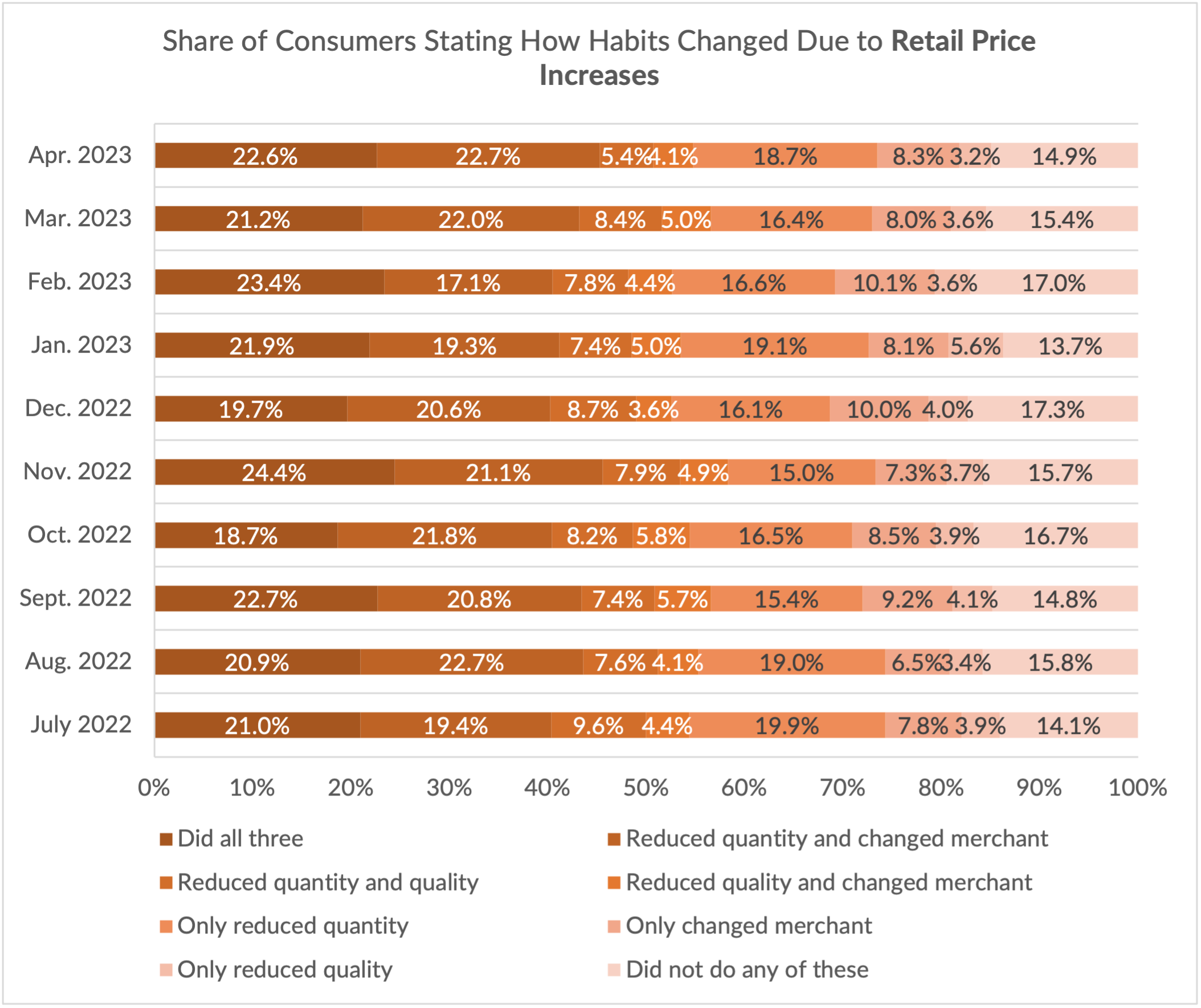
The Federal Reserve’s staying pat, for now.
The announcement on Wednesday (Sept. 20) that the central bank is leaving interest rates unchanged — at a more than 20-year high — and another rate hike may be in the cards later in the year begs the question:
Just how resilient is the consumer?
At first glance, the answer would be that wallets and the intention to spend remain, for lack of a better word, undaunted.
And retail sales data would seem to serve as effective testament to that sentiment. In the latest reading, as reported here, the Commerce Department reported that retail sales were up 0.6% in August, as measured month over month, by 0.6%. Overall, and through the past eight months, overall retail sales gained 3% against the corresponding period in 2022.

But retail sales are not adjusted for inflation (they’re reported in nominal dollars), which means that it can be difficult to ascertain how much of the gain is 1) due to inflation and/or 2) due to consumers’ purchasing more goods — in terms of actual volume, in terms of actually filling their baskets with a greater number, or at least the same number, of items. It can, of course, be the case that we’re not buying more — we’re just paying more.
We noted, separately, that during August, consumer prices rose by 0.6%. The logic follows then, that if retail sales rise by 0.6% and consumer prices rise by a commensurate amount, then the “number” of items bought may not be on the upswing. That scenario indicates that customers don’t think they need, or simply cannot buy, incremental goods — whether it’s a shirt, a box of cereal or … well, you name it.
So long as retailers are able to pass along price increases to end markets, there’s the chance that they can offset the inflation tied to their own input costs. But if items are not moving off the shelves (again, volume’s not getting a tailwind), then that means there’s the danger of a glut in the months ahead.
If there’s another rate hike in the offing, then consumers will find their monthly obligations to be all the more expensive — and student loan payments are just on the cusp of resuming. PYMNTS research has detailed that the repayments can and likely will take a bite out of discretionary income — across all demographics.
Elsewhere, and in evidence of the pressures that might be felt at the register, and certainly in terms of whether it’s inflation or actual demand driving retail sales, data as recently as this spring showed how habits have been changing. The accompanying chart shows that roughly a quarter of consumers reduced the quantity of items, or reduced the quantity of items and changed merchants.
The fact remains that consumers are wary about what they spend, and where, and when a dollar does not go as far as it used to, the stats that show a resilient consumer may in fact hide some cracks forming in what historically been a sturdy foundation.